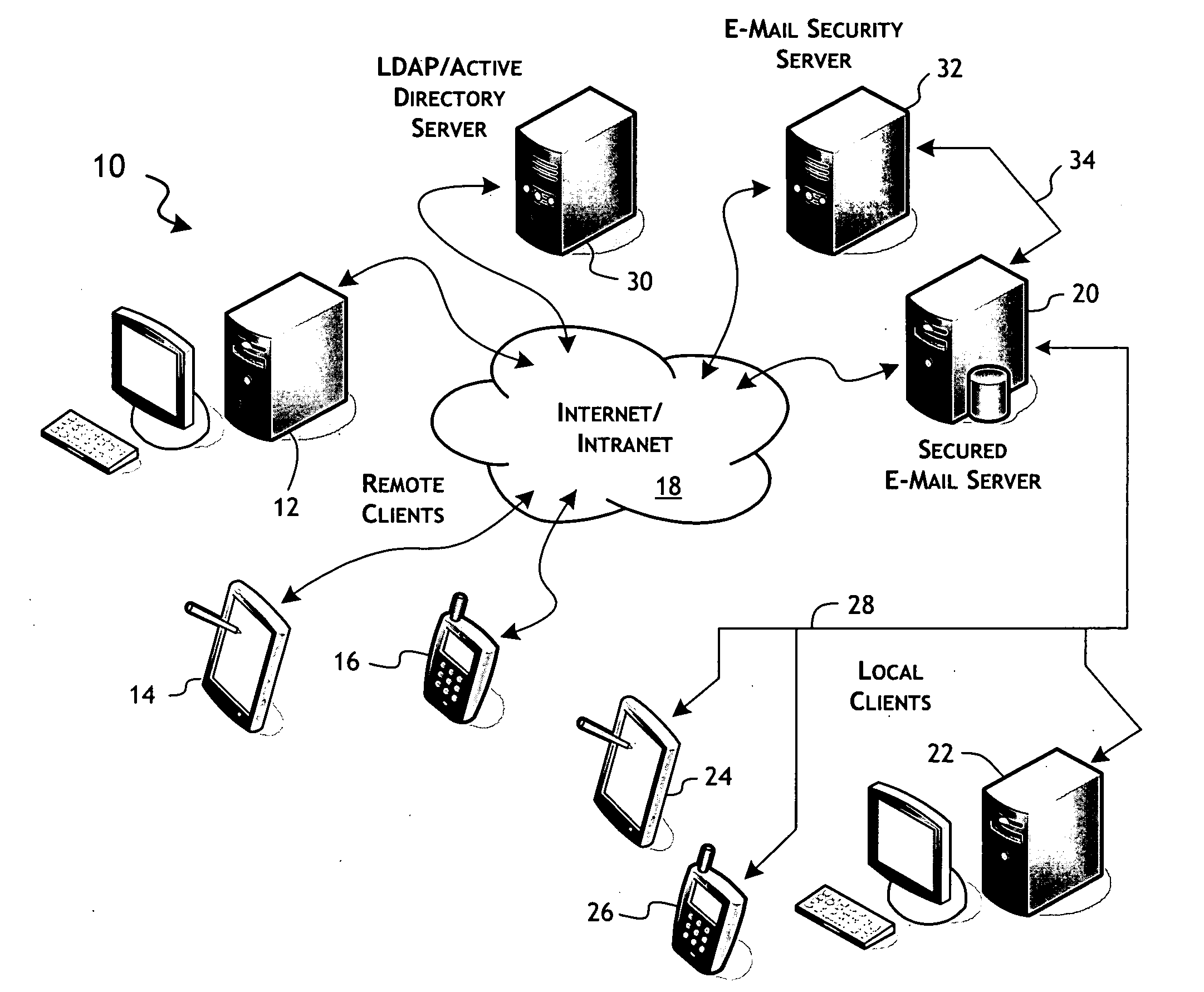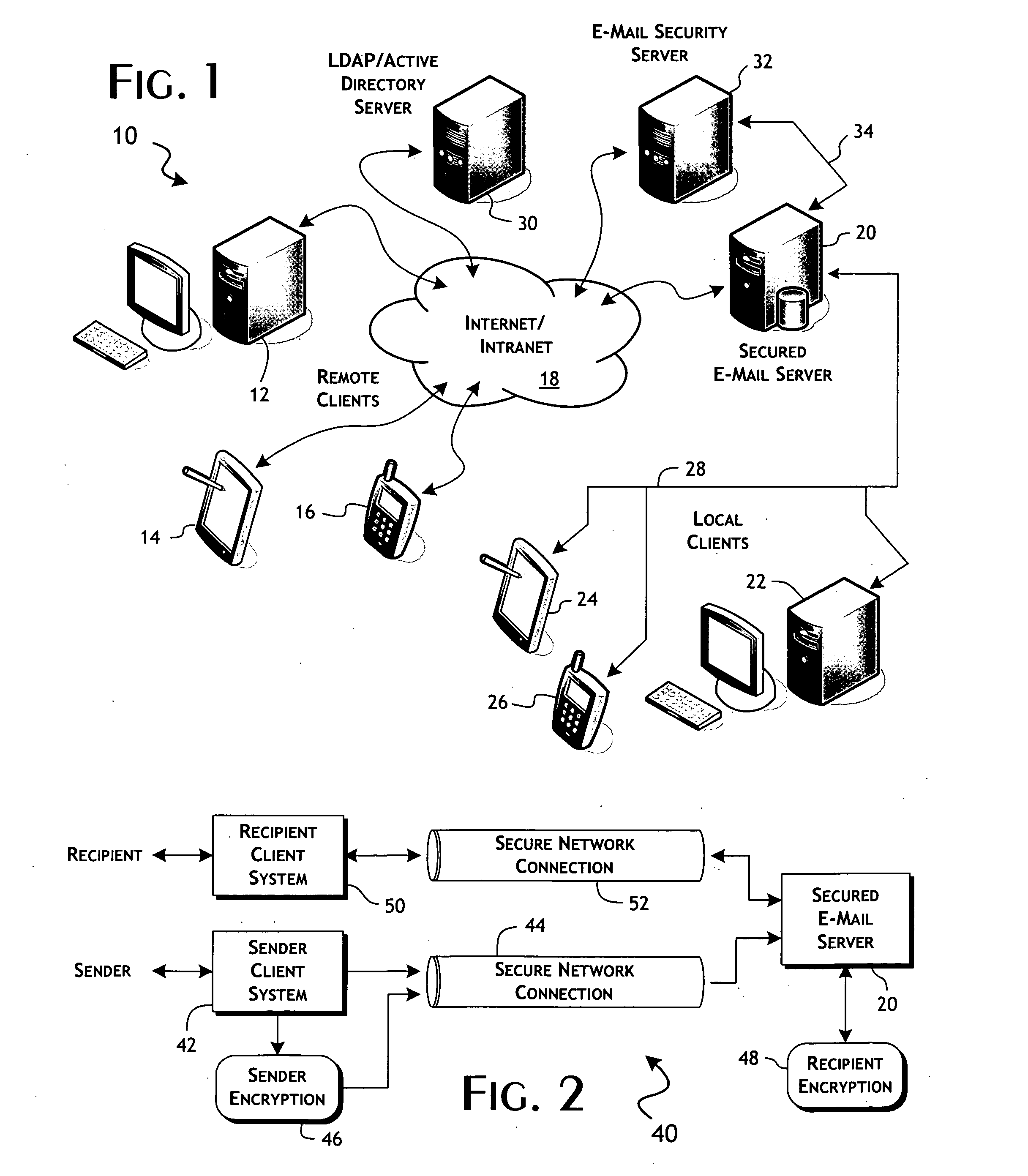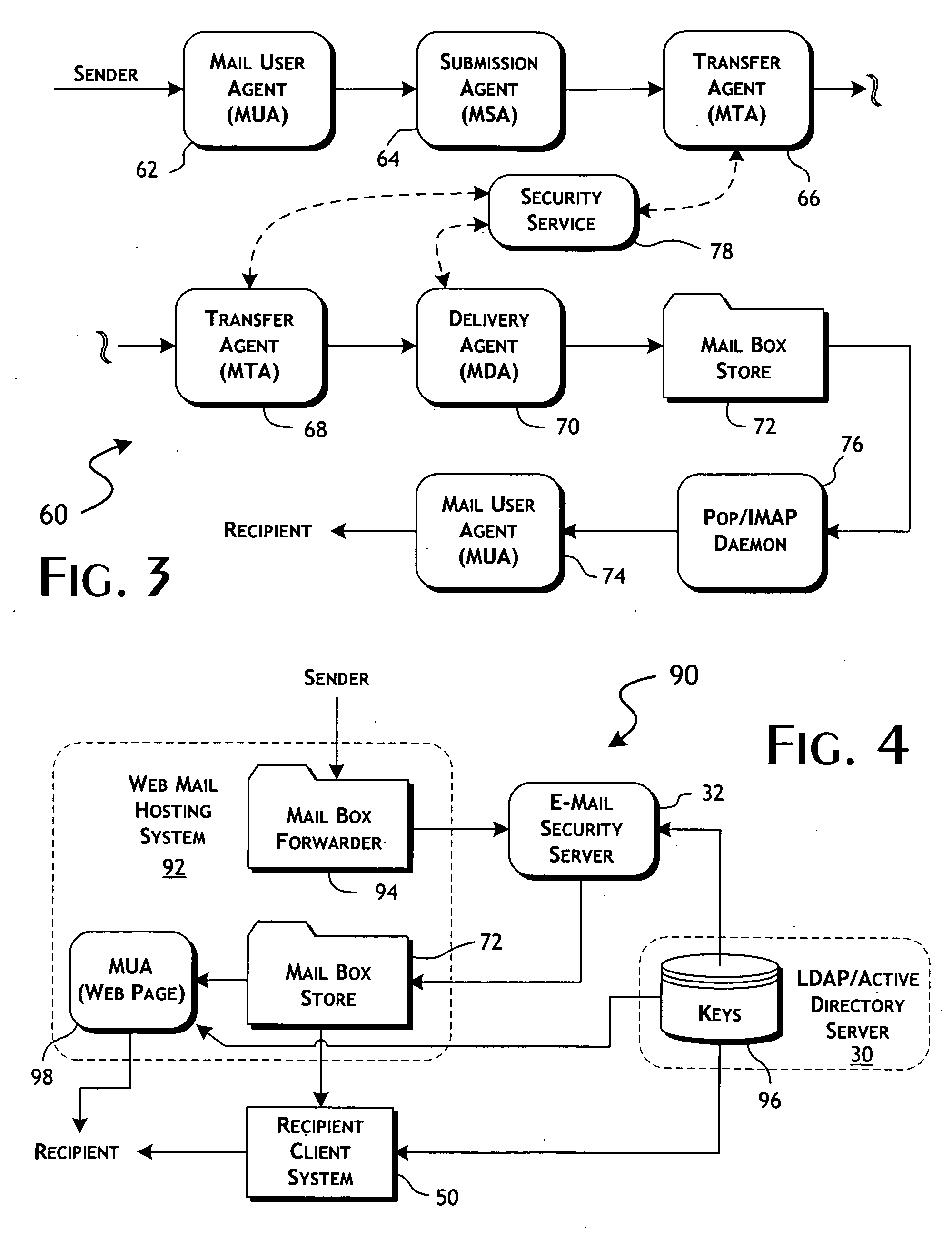Secure e-mail services system and methods implementing inversion of security control
a security control and secure e-mail technology, applied in data switching networks, unauthorized memory use protection, instruments, etc., can solve problems such as loss of confidence in the ability of controls to actually establish and maintain security, unobtrusive implementation, management and maintenance, and many complexities
- Summary
- Abstract
- Description
- Claims
- Application Information
AI Technical Summary
Benefits of technology
Problems solved by technology
Method used
Image
Examples
Embodiment Construction
[0028]The present invention provides well-defined security control over content, particularly e-mail-based content, for the benefit of recipients and, in preferred implementation, associations or organizations of recipients. In the following detailed description, the invention will be primarily described in terms of preferred e-mail-based embodiments. For convenience, the following terms are defined:
[0029]Metadata—control information included as part of the envelope, in the context of an e-mail message, or that part of the content of a message that describes or defines features of the e-mail message including, for example, an addressee, the location of a specified content part of the e-mail message, and the encoding of a specified content part of the e-mail message.
[0030]Sender—a user or, in context, a user computer system that originates an e-mail message.
[0031]Recipient—a user or, in context, a user computer system that receives an e-mail message.
[0032]Addressee—the sender designa...
PUM
 Login to View More
Login to View More Abstract
Description
Claims
Application Information
 Login to View More
Login to View More - R&D
- Intellectual Property
- Life Sciences
- Materials
- Tech Scout
- Unparalleled Data Quality
- Higher Quality Content
- 60% Fewer Hallucinations
Browse by: Latest US Patents, China's latest patents, Technical Efficacy Thesaurus, Application Domain, Technology Topic, Popular Technical Reports.
© 2025 PatSnap. All rights reserved.Legal|Privacy policy|Modern Slavery Act Transparency Statement|Sitemap|About US| Contact US: help@patsnap.com



